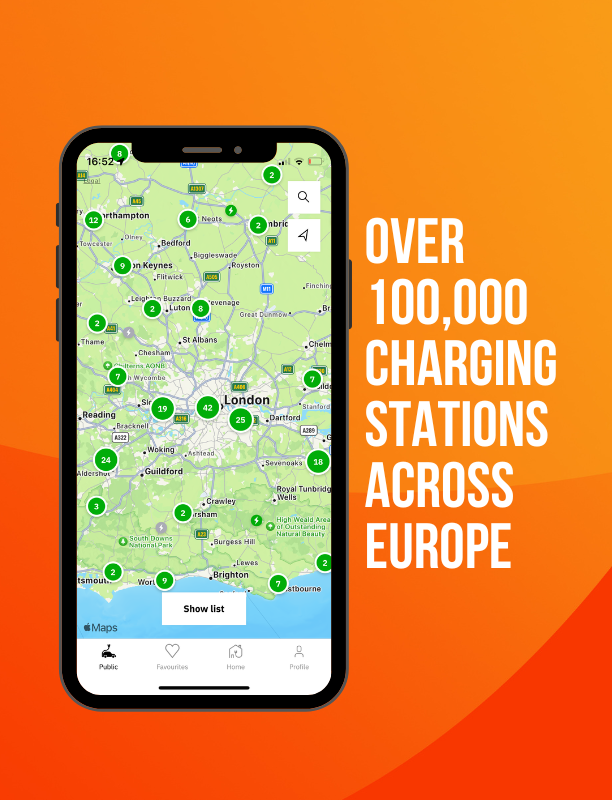Roman Explorer Trail - Family EV Adventure Through Italy's Ancient Empire
Leading family education experts agree that children learn history best through active participation rather than passive observation. The Roman Explorer Trail through Italy delivers exactly this approach, combining professional archaeological workshops, authentic gladiator combat training, and hands-on excavation experiences with seamless electric vehicle travel between Rome's imperial sites and Pompeii's preserved streets.
Discover why Italy’s Roman heritage offers the perfect educational adventure for families, combining hands-on archaeological workshops, gladiator training, and ancient ruins exploration—all accessible through Italy’s rapidly expanding EV charging network.
Italy’s Roman Explorer Trail presents families with children aged 7-14 the ultimate fusion of education and adventure, where 2,000-year-old amphitheatres come alive through interactive experiences, ancient gladiator schools teach historical combat techniques, and archaeological workshops allow young explorers to uncover authentic artefacts. This comprehensive route from Rome to Pompeii via Naples transforms passive museum visits into active historical discovery through some of Europe’s most sophisticated family-friendly programmes.
But what makes this ancient journey particularly exciting for modern families travelling by electric vehicle? Italy’s ambitious €740 million National Recovery and Resilience Plan (PNRR) investment in EV infrastructure, adding 21,400 ultra-fast charging stations by 2025, has transformed the classic Via Appia route into Europe’s most accessible ancient history adventure for eco-conscious families.
From gladiator training sessions in Rome’s authentic combat schools to hands-on archaeological excavations in Pompeii’s preserved streets, every educational moment is enhanced by sustainable travel that teaches children environmental responsibility alongside ancient history—creating a comprehensive learning experience spanning 2,000 years of human development.
Why Rome to Pompeii Defines Family Educational Travel
The Roman Explorer Trail offers families an unparalleled opportunity to experience living history across multiple ages and interests, creating educational adventures that satisfy curious 7-year-olds fascinated by gladiator combat alongside analytical 14-year-olds studying archaeological preservation techniques.
Educational Depth Across Ages: Unlike theme park experiences targeting narrow age ranges, Rome’s historical sites naturally layer learning opportunities. Seven-year-olds can participate in gladiator combat training while their teenage siblings learn about Roman engineering through Colosseum construction techniques and Pantheon architectural innovations.
Hands-On Historical Learning: Italy’s family education programmes emphasise active participation over passive observation. Children don authentic Roman clothing, participate in traditional crafts, engage in archaeological digs, and learn period-appropriate skills—creating tangible connections to ancient civilisations impossible through textbooks alone.
Modern Infrastructure Supporting Ancient Discovery: Italy’s €740 million EV infrastructure investment ensures families can explore 2,000-year-old sites using 21st-century sustainable technology. The A1 Autostrada from Rome to Naples now features charging stations every 50-60 kilometres, making the 225-kilometre journey comfortable for all EV models while teaching children about technological progress and environmental responsibility.
The Ultimate Roman Explorer Route: Educational Adventure Planning
Phase 1: Rome - The Gladiator’s Capital (4-5 Days)
Base Location: Rome Centro Storico | Educational Focus: Ancient Roman daily life, gladiator culture, imperial architecture
Rome provides the perfect introduction to Roman civilisation, offering families comprehensive archaeological sites, interactive museums, and authentic historical experiences designed specifically for children aged 7-14.
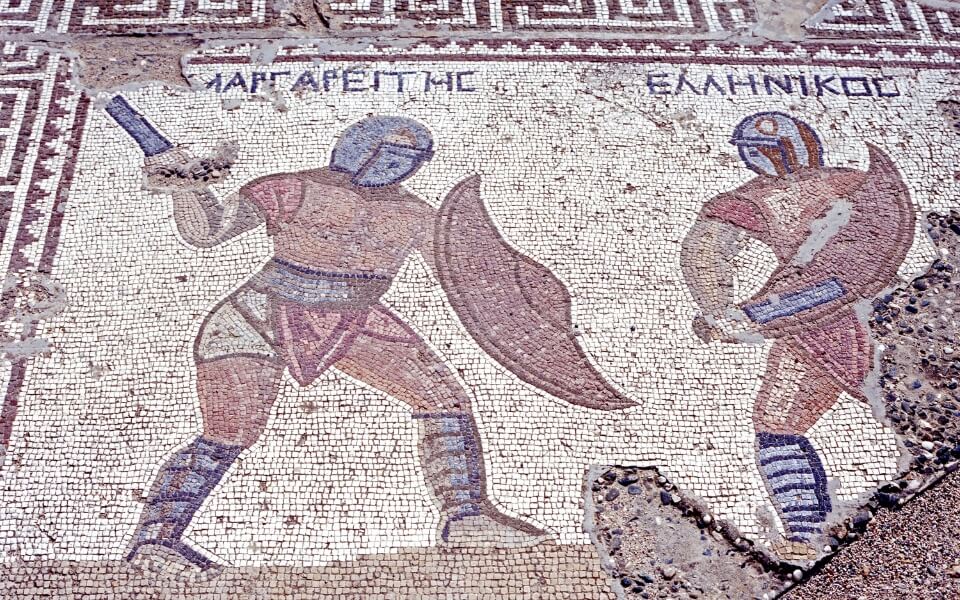 Gladiator School
Gladiator School
Gladiator School of Rome (Via Appia Antica)
The Gladiator School of Rome offers an authentic 2-hour experience perfectly designed for children aged 7-14, where young warriors learn genuine Roman military techniques and historical weaponry handling under the guidance of qualified instructors with specialized child development training. Using safe foam weapons and protective equipment, participants explore ancient combat methods while gaining deep understanding of Roman social hierarchy and gladiator culture. Upon successful completion of the training programme, each child receives an authentic gladiator graduation certificate, creating a tangible memento of their journey into ancient Roman warrior culture that accommodates different skill levels to ensure every participant feels accomplished and engaged.
EV Convenience: Via Appia Antica features dedicated charging stations at the Parco degli Acquedotti visitor centre, perfectly timed for the 2-hour gladiator experience.
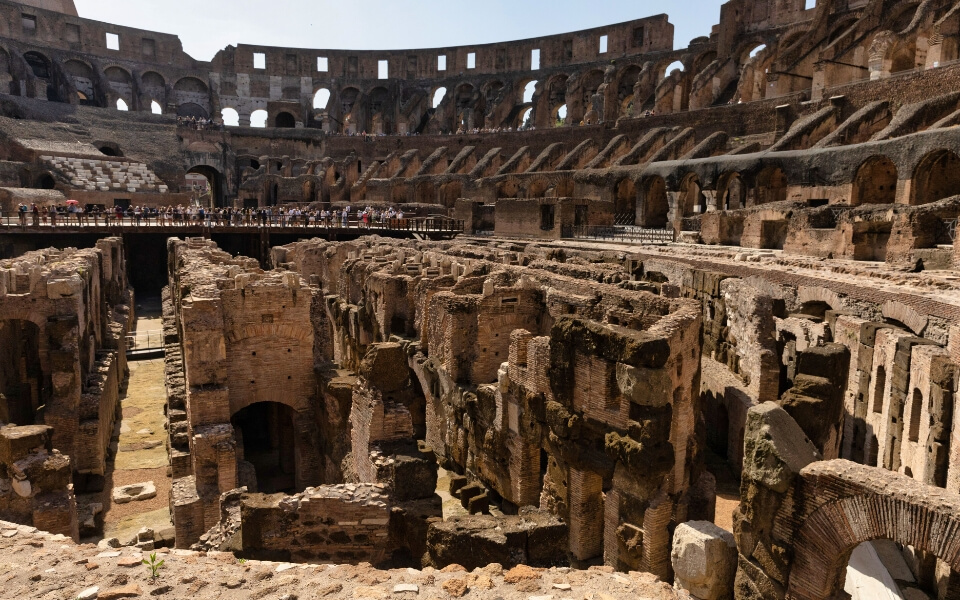 Colosseum Underground
Colosseum Underground
Colosseum Underground and Arena Floor Experience
This comprehensive 3-hour exploration is recommended for children 8+ years for underground areas due to confined spaces, though all ages can enjoy the main arena experience. The programme combines archaeological preservation education with engineering marvels and social history, featuring virtual reality reconstructions and hands-on archaeological demonstrations that bring ancient Rome to life. The experience includes Forum and Palatine Hill exploration, providing families with complete understanding of Rome’s imperial heart while accommodating different learning styles and interests through interactive elements designed specifically for young explorers.
Family Strategy: Book early morning slots (8:30 AM) to avoid crowds and heat, allowing children better concentration for educational content.
Phase 2: Naples - Gateway to Ancient Preservation (2-3 Days)
Distance from Rome: 225 kilometres | Driving Time: 2.5 hours | EV Range Required: 35-40% Educational Focus: Archaeological preservation, ancient daily life, volcanic impact on history
Naples serves as both the geographical and educational bridge between Rome’s imperial grandeur and Pompeii’s preserved domestic life, offering families world-class archaeological museums and preparation for hands-on excavation experiences.
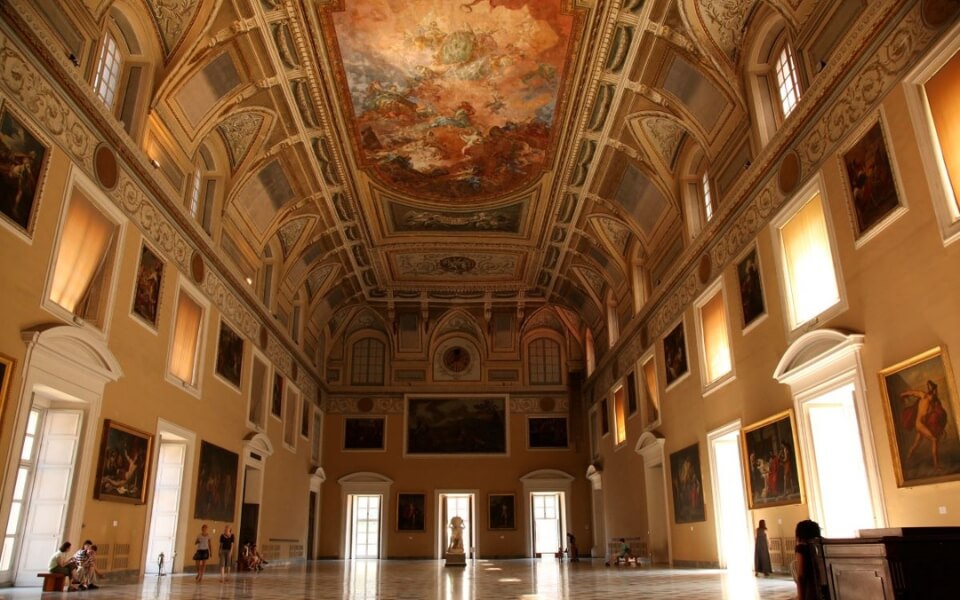 National Archaeological Museum of Naples
National Archaeological Museum of Naples
National Archaeological Museum of Naples
This world-class museum offers 2-3 hours of immersive exploration featuring original frescoes, mosaics, and artefacts from Pompeii and Herculaneum. Families can engage with interactive multimedia guides specifically designed for 7-14 age groups, while participating in replica handling sessions, fresco technique demonstrations, and archaeological tool explanations that provide hands-on understanding of ancient preservation methods. Family-focused guided tours are available to enhance the educational experience and ensure age-appropriate engagement with the museum’s extraordinary collection of Roman treasures.
These comprehensive workshops provide authentic Roman learning experiences where families can master fresco painting techniques using period materials, construct traditional Roman floor decorations through mosaic creation classes, and gain practical experience with replica excavation equipment during archaeological tool training. The programmes also include ancient daily life reconstruction activities featuring role-play Roman family scenarios using museum artefacts as context, creating immersive educational experiences that connect modern families with their ancient counterparts through hands-on cultural exploration.
EV Infrastructure Excellence: Naples leads Italy with 225 charging points per 100 km², ensuring comprehensive coverage throughout the historic centre and museum district.
Strategic Charging Locations:
- Naples Centrale Station: Ultra-fast charging (150kW) perfect for museum visits
- Port of Naples: Multiple providers with scenic harbour views during charging sessions
- Archaeological Museum Area: Street-level charging stations within walking distance of major attractions
Phase 3: Pompeii - The Time Capsule Adventure (2-3 Days)
Distance from Naples: 30 kilometres | Duration: 45 minutes via A3 Autostrada Educational Focus: Archaeological excavation, preservation science, ancient urban planning
Pompeii offers families the ultimate hands-on archaeological experience, where children aged 7-14 can participate in actual excavation techniques, learn preservation methods, and explore the world’s most completely preserved ancient city.
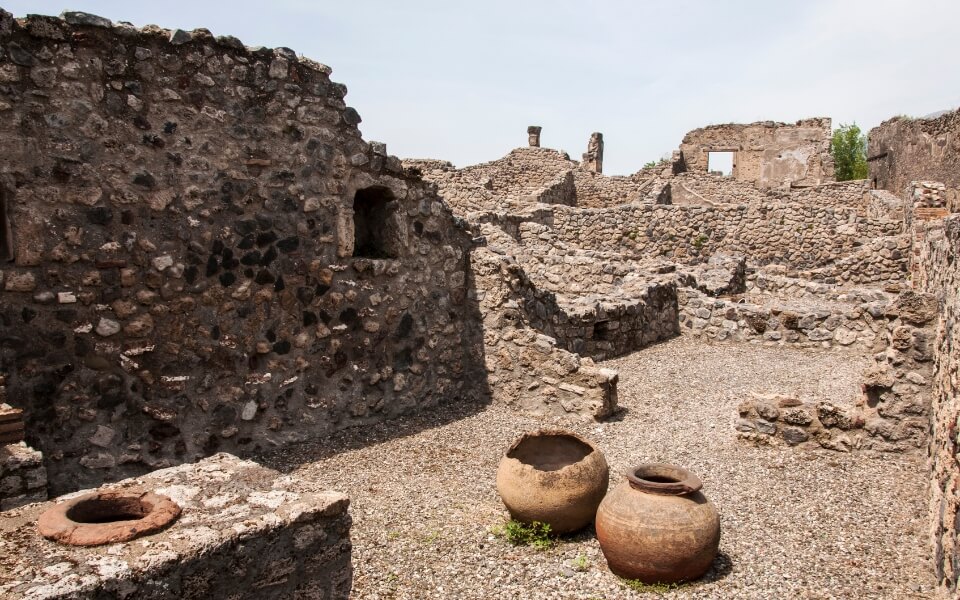 Pompeii Archaeological Park
Pompeii Archaeological Park
Pompeii Archaeological Park Family Programmes
The Junior Archaeologist Experience offers a comprehensive 3-hour programme featuring excavation simulation, artefact analysis, and preservation techniques under the guidance of qualified archaeologists with family education specialisation. The park provides separate programmes for 7-10 and 11-14 age groups, ensuring appropriate complexity levels for different developmental stages. All participants receive child-sized tools, safety equipment, and documentation materials, while achieving educational outcomes including understanding scientific methodology, historical preservation, and ancient daily life through hands-on archaeological participation that mirrors professional excavation standards.
These immersive activities include excavation simulation on prepared sites with hidden replica artefacts, stratigraphy learning to understand how archaeological layers reveal historical timelines, and artefact cataloguing using professional documentation techniques employed in real excavations. Participants also explore preservation methods to discover how ancient materials survive and deteriorate over time, while conducting urban planning analysis to study Roman city design, infrastructure, and social organisation that reveals the sophisticated planning behind ancient Pompeii’s remarkably preserved urban landscape.
For families seeking deeper engagement, these sophisticated workshops include plaster cast creation learning the technique used to capture human forms in volcanic ash, ancient technology reconstruction where participants build working Roman machines and tools, and comparative archaeology sessions that compare Pompeii with other Roman sites visited earlier in the journey. The programme culminates with scientific documentation training, enabling families to create professional-style archaeological reports that serve as lasting educational mementos while developing genuine archaeological research and presentation skills.
Hidden Roman Treasures: Off-the-Beaten-Path Family Adventures
Secret Underground Rome: Beyond the Tourist Trail
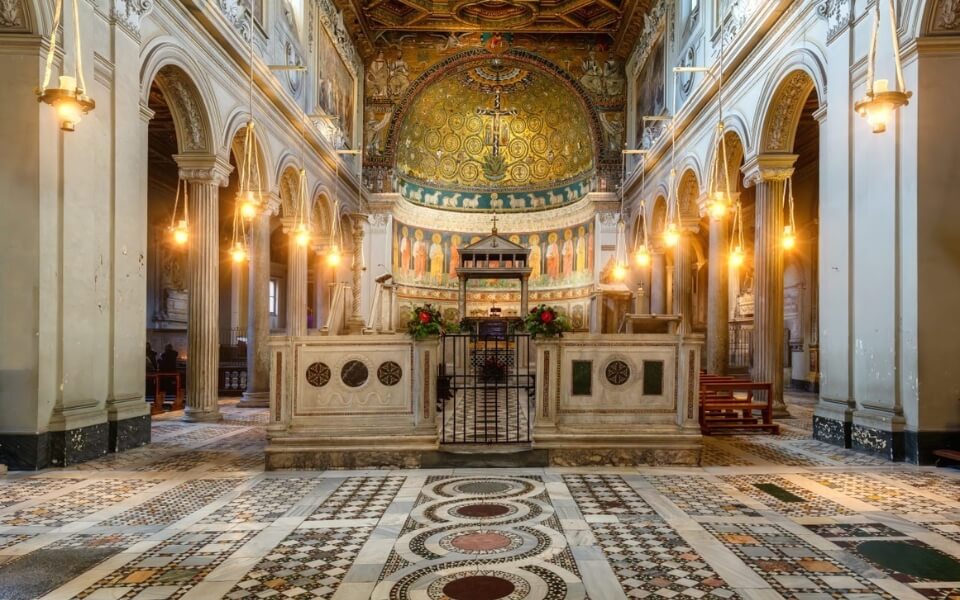 San Clemente Basilica
San Clemente Basilica
San Clemente Basilica: The Three-Level Time Machine
This extraordinary 12th-century basilica conceals a fascinating archaeological secret—three distinct historical layers built one atop another spanning 2,000 years. Families descend through medieval church, 4th-century basilica, and finally reach a 1st-century Mithraic temple where Roman soldiers once worshipped. Children aged 8-14 find this vertical archaeological adventure particularly engaging as each level reveals different periods of Roman history, from early Christianity to mysterious pagan rituals. The 45-minute self-guided exploration includes audio guides designed for families, making complex historical concepts accessible through storytelling and atmospheric sound effects.
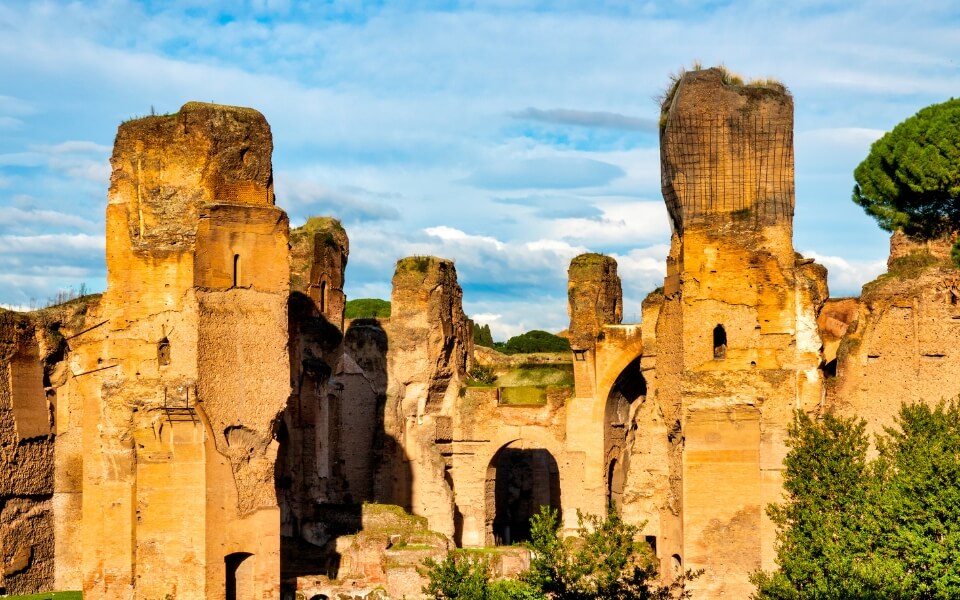 Baths of Caracalla
Baths of Caracalla
Baths of Caracalla: Virtual Reality Roman Spa Experience
While most families rush to the Colosseum, the Baths of Caracalla offer an immersive VR experience that reconstructs ancient Rome’s most luxurious public baths. Children wear specially designed VR headsets to see the baths as Romans experienced them—complete with marble decorations, pools filled with water, and Roman citizens relaxing. The 90-minute experience combines archaeological exploration with cutting-edge technology, teaching families about Roman engineering, social customs, and daily life through interactive reconstruction. Family tickets include child-friendly VR equipment and archaeological workshops where children create replica Roman bath tokens and learn about ancient hygiene practices.
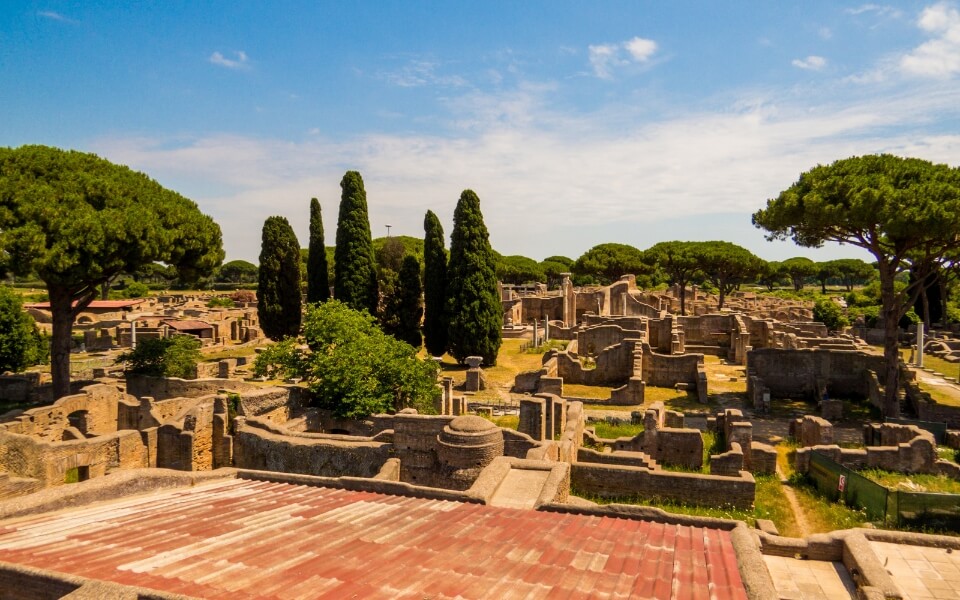 Ostia Antica
Ostia Antica
Ostia Antica: Rome’s Pompeii Without the Crowds
The Forgotten Port City Adventure
Just 30 kilometres from Rome via excellent EV charging infrastructure, Ostia Antica provides families with Pompeii-quality archaeological experiences without overwhelming crowds. This perfectly preserved ancient port city features intact Roman streets, amphitheatre, and mosaics where children can explore freely while learning about Roman commerce, entertainment, and urban planning. Family-friendly features include bicycle rentals for site exploration, archaeological treasure hunt activities, and hands-on workshops where children learn ancient Roman trading practices and mosaic creation techniques using materials found on-site.
Interactive Archaeological Experiences:
The site offers “Young Archaeologist” programmes where children aged 7-14 participate in simulated excavations, learn to identify Roman pottery fragments, and understand how archaeologists piece together ancient daily life. Professional archaeologists guide families through merchant shops, Roman apartments, and public baths, while children complete investigation booklets that transform exploration into educational adventure games.
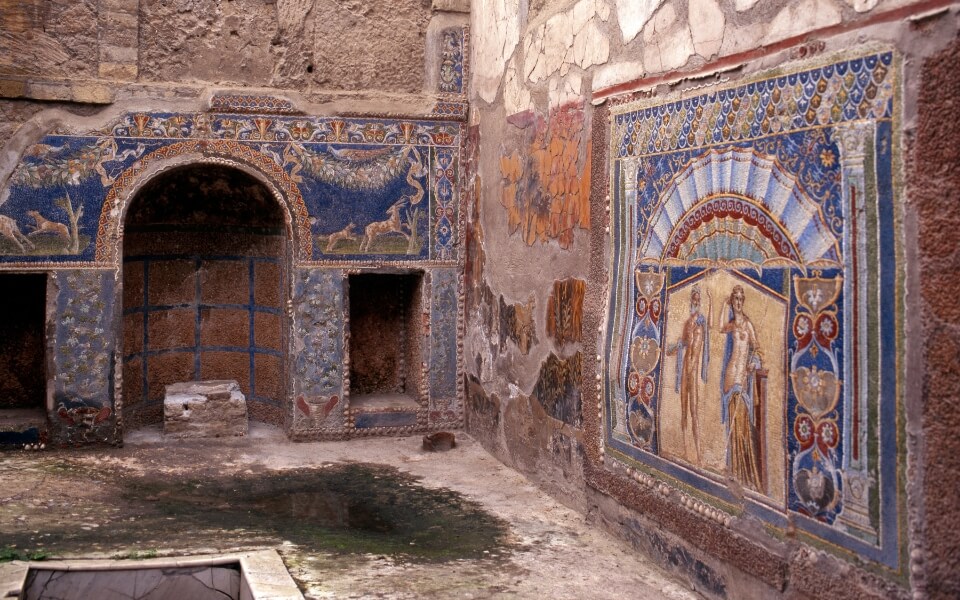 The Villa of the Papyri
The Villa of the Papyri
Villa dei Papiri: The Herculaneum Treasure Hunt
Underwater Archaeology and Luxury Roman Living
Herculaneum offers families a more intimate alternative to Pompeii, featuring perfectly preserved Roman luxury villas and the fascinating Villa dei Papiri—a seaside mansion containing the world’s only intact ancient library. Children explore multi-level Roman houses with original wooden furniture, mosaics, and frescoes while learning about volcanic preservation and archaeological conservation. The “Papyrus Workshop” teaches families how ancient Romans created books, with children making replica scrolls using traditional techniques and natural materials.
Marine Archaeology Adventures:
The Herculaneum marina features underwater archaeological displays where families observe preserved Roman boats and learn about ancient maritime technology. Glass-bottom viewing areas allow children to see submerged Roman structures while understanding how volcanic eruptions created unique preservation conditions. Interactive exhibits demonstrate underwater excavation techniques and marine conservation methods through hands-on activities designed for young explorers.
Secret Roman Engineering: Aqueduct and Road Adventures
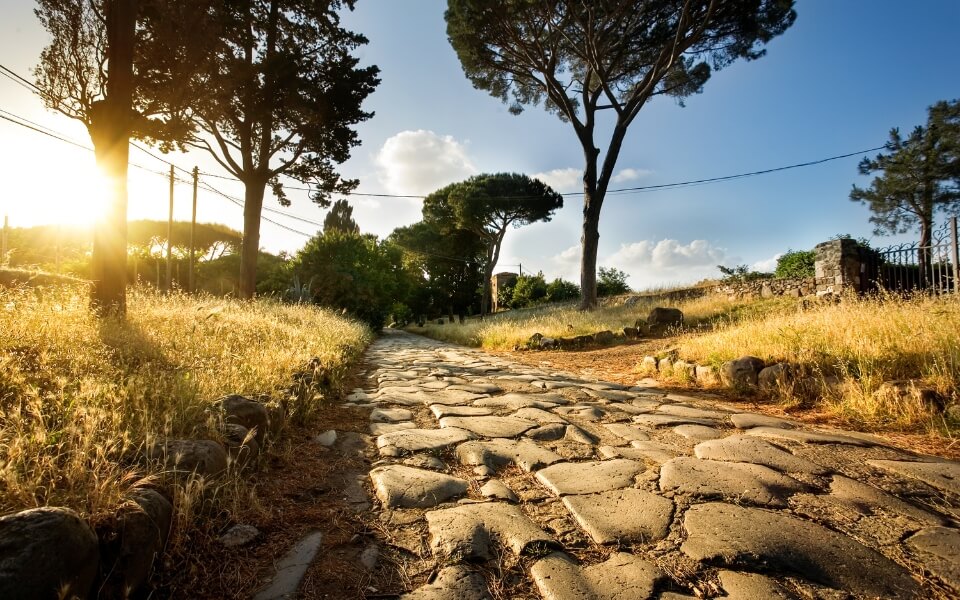 Appian Way
Appian Way
Appian Way Archaeological Bike Tours
The Via Appia Antica offers families guided bicycle tours through 3,000-year-old Roman engineering marvels, including original paving stones, ancient tombs, and functioning aqueducts. Children learn about Roman construction techniques while cycling along history’s most famous road, with frequent stops for archaeological explanations and hands-on activities. Family-friendly bicycle equipment includes child seats, training wheels, and safety gear, while experienced guides share stories of Roman travelers, merchants, and armies who used this route centuries ago.
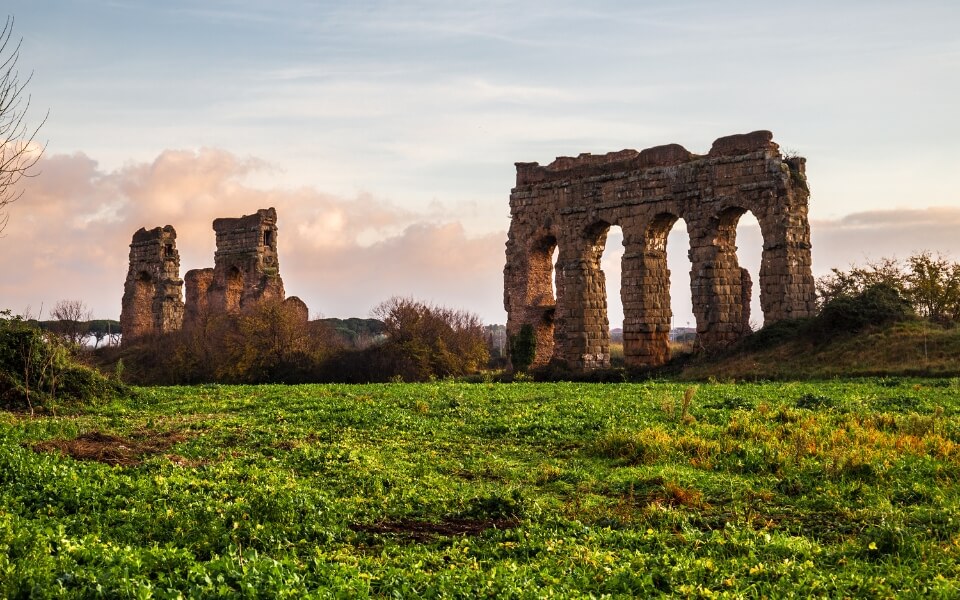 Parco degli Acquedotti
Parco degli Acquedotti
Aqueduct Park Adventures:
The Parco degli Acquedotti provides families with spectacular Roman aqueduct ruins perfect for exploration and photography. Children participate in engineering workshops learning how Romans transported water across vast distances using gravity-fed systems that modern engineers still admire. Interactive demonstrations show how Roman concrete remains stronger than modern materials, while family activities include aqueduct construction challenges using period-appropriate tools and techniques.
Hidden Roman Art and Daily Life
Palazzo Massimo: The Secret Museum
This lesser-known museum houses Rome’s most spectacular frescoes and mosaics in intimate gallery settings perfect for family exploration. The Villa of Livia frescoes transport families into Roman garden paradise, while interactive family guides help children understand Roman artistic techniques and symbolic meanings. Art workshops allow children to create Roman-style paintings using natural pigments and traditional brushes, while learning about Roman daily life through artistic interpretation and archaeological evidence.
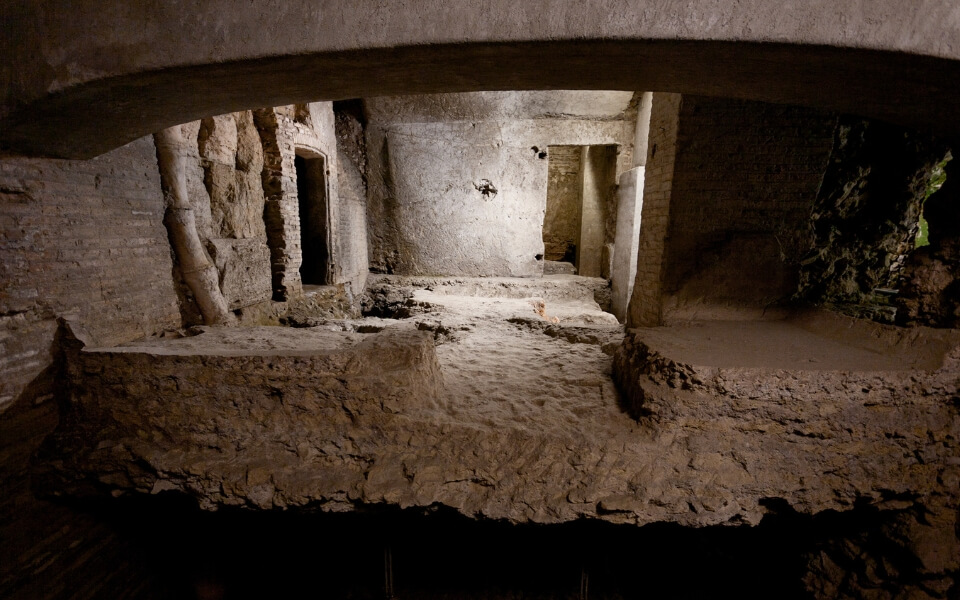 Crypta Balbi
Crypta Balbi
Crypta Balbi: Archaeological Methodology for Families
This unique museum demonstrates how archaeologists work by showing actual excavation sites beneath modern Rome. Families observe active archaeological research while learning scientific methods used to uncover and interpret ancient remains. Children participate in mock excavations using professional tools and documentation techniques, creating detailed archaeological reports about their discoveries and interpretations of Roman daily life through hands-on scientific methodology.
EV-Accessible Hidden Gems Between Rome and Naples
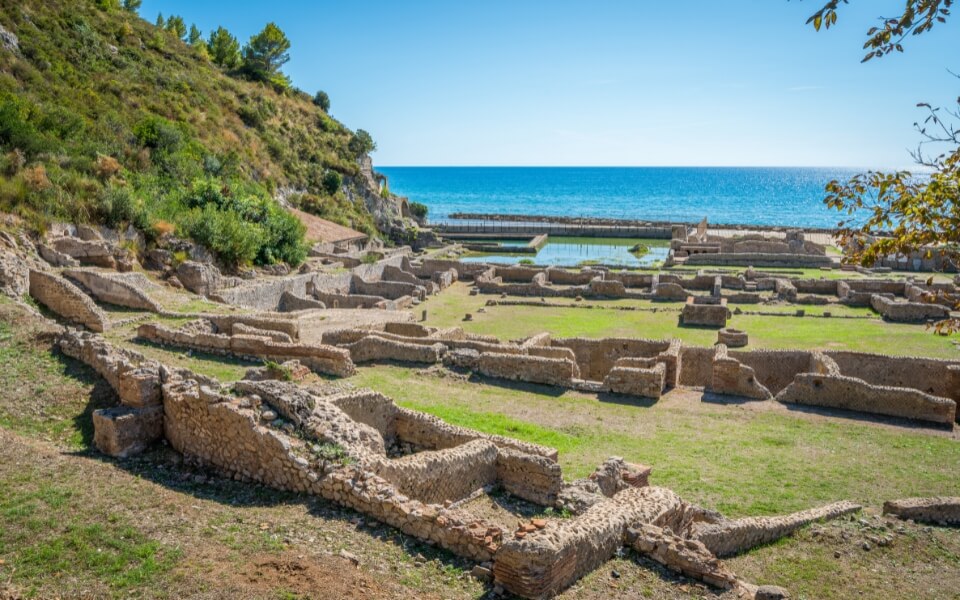 Villa di Tiberio
Villa di Tiberio
Villa di Tiberio, Sperlonga: Seaside Roman Luxury
Located perfectly between Rome and Naples with excellent EV charging infrastructure, Sperlonga offers families the spectacular Villa di Tiberio—Emperor Tiberius’s seaside retreat featuring dramatic coastal caves transformed into Roman dining rooms. Children explore imperial luxury lifestyle while learning about Roman engineering that carved dining spaces directly into cliff faces. Archaeological workshops teach families about Roman banquet customs and imperial entertaining, while coastal location provides swimming opportunities and family-friendly restaurants with stunning Mediterranean views.
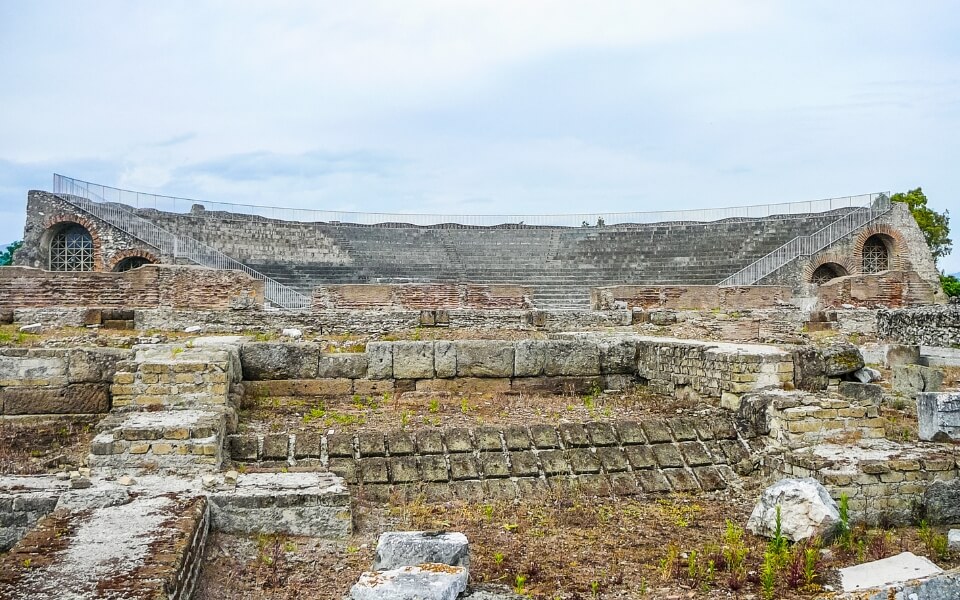 Minturnae Archaeological Site
Minturnae Archaeological Site
Minturnae Archaeological Site: Undiscovered Roman Theatre
This rarely visited Roman city features a perfectly preserved amphitheatre where families can experience acoustic demonstrations and participate in Roman drama workshops. Children learn about Roman entertainment through interactive performances and costume experiences, while archaeological guides explain Roman urban planning and social organization through on-site exploration of temples, shops, and residential areas. Family activities include Roman games and sports in the ancient stadium and traditional craft workshops using archaeological findings as educational inspiration.
Seasonal Planning: When to Discover Ancient Rome
Spring (March-May): The Golden Educational Season
Why Spring Excels for Family Roman Exploration: Spring offers families the ideal combination of mild temperatures (15-22°C), extended daylight hours, and reduced tourist crowds that make archaeological exploration comfortable for children aged 7-14. Easter holidays coincide perfectly with Rome’s ancient festivals season, when many historical sites offer special educational programmes and family workshops unavailable during other periods.
EV Advantages in Spring Weather: Moderate temperatures optimise battery performance, delivering 5-8% better range compared to summer heat stress on EV systems. Pre-conditioning requirements are minimal, and regenerative braking performs excellently on Rome’s frequent hills without weather-related efficiency loss.
Educational Highlights:
- Via Appia Antica wildflower blooms create stunning photography opportunities while exploring ancient Roman roads
- Archaeological sites remain comfortable for extended family exploration sessions
- Outdoor gladiator training at optimal temperatures for children’s concentration and participation
Spring EV Charging Strategy: Reduced air conditioning usage means charging sessions can be 15-20% shorter, allowing more time for archaeological workshops and educational activities.
Early Autumn (September-October): Heritage Festival Season
Cultural Event Integration: Autumn brings Notte Bianca dei Musei (Museum White Night) and Settimana della Cultura (Culture Week), offering families free or reduced-price access to normally expensive archaeological sites and exclusive family programmes. Harvest festivals in Naples region provide authentic cultural experiences combining Roman agricultural history with modern Italian traditions.
Optimal EV Performance Period: September-October delivers peak EV efficiency with comfortable temperatures, minimal battery stress, and excellent regenerative braking performance on Apennine hills between Rome and Naples.
Weather Benefits for Archaeological Exploration:
- Clear skies perfect for Pompeii outdoor excavation workshops
- Stable weather ideal for multi-day archaeological programmes
- Reduced rain ensuring underground Roman site access remains available
Winter Considerations (November-February): Indoor Focus Strategy
Indoor Educational Advantages: Winter shifts family focus to Rome’s extraordinary indoor archaeological experiences: Vatican Museums (perfect for rainy days), Palazzo Massimo frescoes, and National Archaeological Museum in Naples. Many underground sites like San Clemente maintain constant temperatures year-round.
EV Winter Management: Italian winter temperatures (5-15°C) require pre-conditioning strategies but remain within optimal EV performance ranges. Indoor charging at hotels becomes essential, making accommodation selection crucial for family convenience.
Educational Workshop Season: Many archaeological education centres offer extended indoor programmes during winter months, including fresco painting workshops, mosaic creation classes, and Roman engineering seminars specifically designed for families avoiding outdoor weather.
Advanced EV Battery Management for Ancient Route Exploration
Rome’s Seven Hills: Regenerative Braking Mastery
Hill Strategy for Family EVs: Rome’s famous seven hills provide excellent opportunities for regenerative braking optimisation, potentially recovering 15-25% of energy used during archaeological site exploration. Palatine Hill approaches and Aventine Hill descents offer families practical experience with EV energy recovery while accessing major Roman archaeological sites.
Teaching Opportunities: Children aged 7-14 can observe real-time energy recovery through dashboard displays, learning about sustainable technology while exploring ancient Roman engineering. This creates dual educational value: understanding both Roman aqueduct gravity systems and modern regenerative braking physics.
Practical Hill Navigation:
- Approach Colosseum via Colle Oppio for optimal regenerative braking demonstration
- Vatican approach through Monte Mario provides scenic route with excellent energy recovery
- Trastevere hill descents offer multiple regenerative opportunities during family dining excursions
Autostrada Battery Strategy: Rome to Naples
Pre-Journey Optimisation: Charge to 90% before departing Rome for maximum psychological comfort with children aboard. The 225-kilometre journey requires 35-40% battery capacity, leaving substantial reserves for urban exploration upon Naples arrival.
Strategic Charging Points:
- Magliano Sabina (A1): 45-minute charging stop perfectly timed for family lunch and playground activities
- Caianello (A1): Final top-up before Naples with 30-minute charging sessions ideal for comfort breaks
Speed Management for Families: Maintain 110-120 km/h on A1 Autostrada for optimal efficiency balance between journey time and energy consumption. This speed ensures comfortable arrival with adequate battery reserves for Naples archaeological exploration.
Urban Archaeological Site Battery Planning
Rome Daily Range Management: Plan 80-120 kilometres daily for comprehensive archaeological site coverage, including suburban destinations like Ostia Antica and Via Appia Antica. Urban charging during 2-3 hour museum visits ensures continuous exploration capability.
Pompeii Extended Stay Strategy: Pompeii Archaeological Park requires full-day visits with minimal driving. Pre-charge to 100% the evening before archaeological workshops to ensure air conditioning availability during hot excavation sessions without range anxiety.
Weather-Specific EV Driving for Archaeological Adventures
Summer Heat Management (June-August)
Battery Protection Strategies: Italian summer temperatures exceeding 35°C can reduce EV range by 15-20% due to air conditioning requirements and battery thermal management. Pre-condition vehicles during overnight charging to reduce initial energy drain.
Archaeological Site Timing: Schedule outdoor activities like gladiator training and Pompeii excavations for early morning hours (8:00-11:00 AM) when temperatures remain comfortable and EV efficiency stays optimal.
Charging Strategy Adjustments:
- Seek covered charging stations to prevent battery overheating
- Charge during hottest periods while families enjoy air-conditioned museums
- Avoid fast charging during peak heat hours to protect battery longevity
Winter Archaeological Exploration
Cold Weather EV Optimisation: Pre-heat vehicles during morning charging to reduce energy consumption and ensure passenger comfort for early archaeological site visits. Heated seats consume less energy than cabin heating for maintaining comfort during outdoor site exploration.
Rain Day Alternatives: Italy’s winter rain requires flexible itinerary planning. Underground Roman sites like San Clemente and Mithraic temples provide weather-independent archaeological experiences while EVs charge at nearby covered stations.
Range Considerations: Cold weather can reduce EV range by 10-15%, requiring more frequent charging stops. Plan shorter daily distances and identify backup charging locations near major archaeological attractions.
Practical EV Family Travel: Ancient Route, Modern Technology
The Rome-Naples EV Corridor: Infrastructure Excellence
A1 Autostrada Charging Strategy: Italy’s primary north-south highway offers comprehensive EV infrastructure specifically designed for family travel, with stations strategically placed for educational stops and comfort breaks.
Key Charging Hubs with Family Amenities:
- Magliano Sabina (A1): 150kW charging, playground, family restaurant, 45 minutes north of Rome
- Frosinone Est (A1): 100kW charging, large rest area, educational displays about local Roman sites
- Caianello (A1): 175kW ultra-fast charging, family-friendly facilities, 30 minutes north of Naples
Range-Friendly Family Planning: The 225-kilometre Rome-Naples route requires 35-40% battery capacity for most family EVs, leaving comfortable reserves for urban exploration and unexpected educational stops.
Charging Session Educational Opportunities: Many autostrada charging stations feature historical information displays, Roman road markers, and archaeological site information—turning necessary charging stops into mini-educational experiences.
Urban EV Navigation for Families
Rome Centro Storico Access: Electric vehicles enjoy special privileges in Rome’s ZTL (Zona Traffico Limitato) areas, allowing family access to historical centres typically forbidden to conventional vehicles.
Family-Friendly Charging Locations:
- Piazza del Colosseo Area: Multiple charging options within walking distance of major attractions
- Vatican City Vicinity: Charging stations near St. Peter’s Square with family facilities
- Trastevere District: Neighbourhood charging perfect for exploring family restaurants and gelaterias
Naples Historic Centre Navigation:
- Port Area Charging: Multiple fast-charging options with ferry views and family amenities
- Archaeological Museum District: Street-level charging stations serving multiple historical attractions
- Central Station Area: Comprehensive charging infrastructure for onward travel to Pompeii
Budget Planning: Educational Value and EV Costs
Daily EV Charging Costs (Family of Four):
- Rome Urban Exploration: €12-18 daily (100-150km including suburban archaeological sites)
- Rome-Naples Journey: €25-35 (including charging buffer and autostrada premium rates)
- Naples-Pompeii Circuit: €8-12 daily (short distances, frequent return trips)
Educational Experience Investment:
- Gladiator School Experience: €45-65 per child (includes equipment, instruction, certificate)
- Colosseum Underground Tours: €25-35 per person (family discounts available)
- Pompeii Archaeological Workshops: €55-75 per child (includes professional supervision, equipment)
- Museum Family Packages: €60-90 per family (multiple site access, educational materials)
Money-Saving EV Strategies for Educational Travel:
- Book Accommodation with Charging: Many family hotels near archaeological sites include EV charging, saving €15-25 daily
- Combine Charging with Meals: Restaurant charging during family dining saves time and costs
- Educational Site Packages: Many Roman sites offer family packages reducing individual attraction costs by 20-30%
- Autostrada Off-Peak Travel: Avoid peak toll rates (weekends, holidays) for 15-20% savings on charging and tolls
Your Roman Legacy Adventure
The Roman Explorer Trail represents the perfect fusion of ancient discovery and modern sustainable travel, creating educational experiences that will influence your children’s understanding of history, science, and environmental responsibility for years to come. From hands-on gladiator training in Rome’s authentic combat schools to professional archaeological participation in Pompeii’s preserved streets, every family moment contributes to comprehensive learning that textbooks cannot provide.
Italy’s investment in EV infrastructure, with 21,400 new ultra-fast charging stations by 2025, ensures that exploring 2,000-year-old civilizations using cutting-edge sustainable technology enhances rather than complicates family education. The A1 Autostrada charging corridor and comprehensive urban networks mean parents can focus on children’s learning experiences rather than travel logistics.
The transformation of passive museum visits into active archaeological participation creates memories that inspire lifelong learning. Children who participate in Gladiator School combat training, excavate authentic artefacts in Pompeii, and document archaeological discoveries develop critical thinking skills, scientific methodology understanding, and cultural appreciation that enriches all future learning.
For families with children aged 7-14, the Roman Explorer Trail offers perfectly balanced education spanning gladiator combat excitement for younger children and serious archaeological methodology for teenagers. Every family member discovers learning opportunities matching their developmental stage while sharing common historical discoveries that create lasting family bonds.
Ready to Begin Your Roman Adventure? Download the easyCharging app today and start planning your comprehensive ancient civilization exploration. With transparent pricing, real-time availability, and comprehensive coverage throughout Italy’s archaeological regions, your sustainable educational adventure through the Roman Empire begins with a single app download.
The Eternal City and its ancient empire await your family’s discovery—combining timeless historical education with cutting-edge sustainable travel for the ultimate learning adventure that will inspire young explorers for generations to come.
Frequently asked questions
Absolutely! Italy’s €740 million PNRR investment has created one of Europe’s most comprehensive EV networks. The A1 Autostrada from Rome to Naples features charging stations every 50-60 kilometres, while Naples boasts 225 charging points per 100 km². The easyCharging app provides real-time availability and transparent pricing across over 100,000 charging points throughout Europe, ensuring you’ll never be stranded with anxious children.
Most family charging sessions require 30-45 minutes for 80% battery capacity. Strategic charging locations like Magliano Sabina (A1) feature playgrounds and family restaurants, while many autostrada stations include historical displays about Roman sites—turning charging time into educational mini-lessons.
The easyCharging app includes 24/7 customer support for charging difficulties, while most family EVs come with roadside assistance covering EV-specific services. Italy’s excellent public transport connects all major Roman sites, so you can continue your archaeological adventure by train or bus if needed. We recommend downloading offline maps and keeping backup transportation contacts.
Yes! Electric vehicles enjoy special privileges in Rome’s ZTL (Zona Traffico Limitato) areas, allowing access to historical centres typically forbidden to conventional vehicles. This means you can park closer to the Colosseum, Roman Forum, and Vatican than petrol car users, making family exploration much easier with young children and archaeological equipment.
Book Colosseum Underground tours and Gladiator School experiences 2-4 weeks ahead, especially during spring (March-May) and autumn (September-October). Pompeii Archaeological Workshops require 1-2 weeks advance booking. Many experiences offer family packages with 20-30% cost savings when booked together through official archaeological site websites.
Most major sites offer accessibility features. The Colosseum has lifts and wheelchair access to main levels, though underground areas require stairs. Pompeii provides accessible routes covering 60% of the site, with golf cart transport available. Naples Archaeological Museum is fully accessible. Contact sites directly about specific family needs when booking educational programmes.
UK families need valid passports, European driving licences, vehicle registration documents, and comprehensive insurance covering EU travel. The easyCharging app handles all charging payment documentation automatically. Consider downloading offline maps and keeping emergency contact information for both your accommodation and EV manufacturer’s Italian support services.

